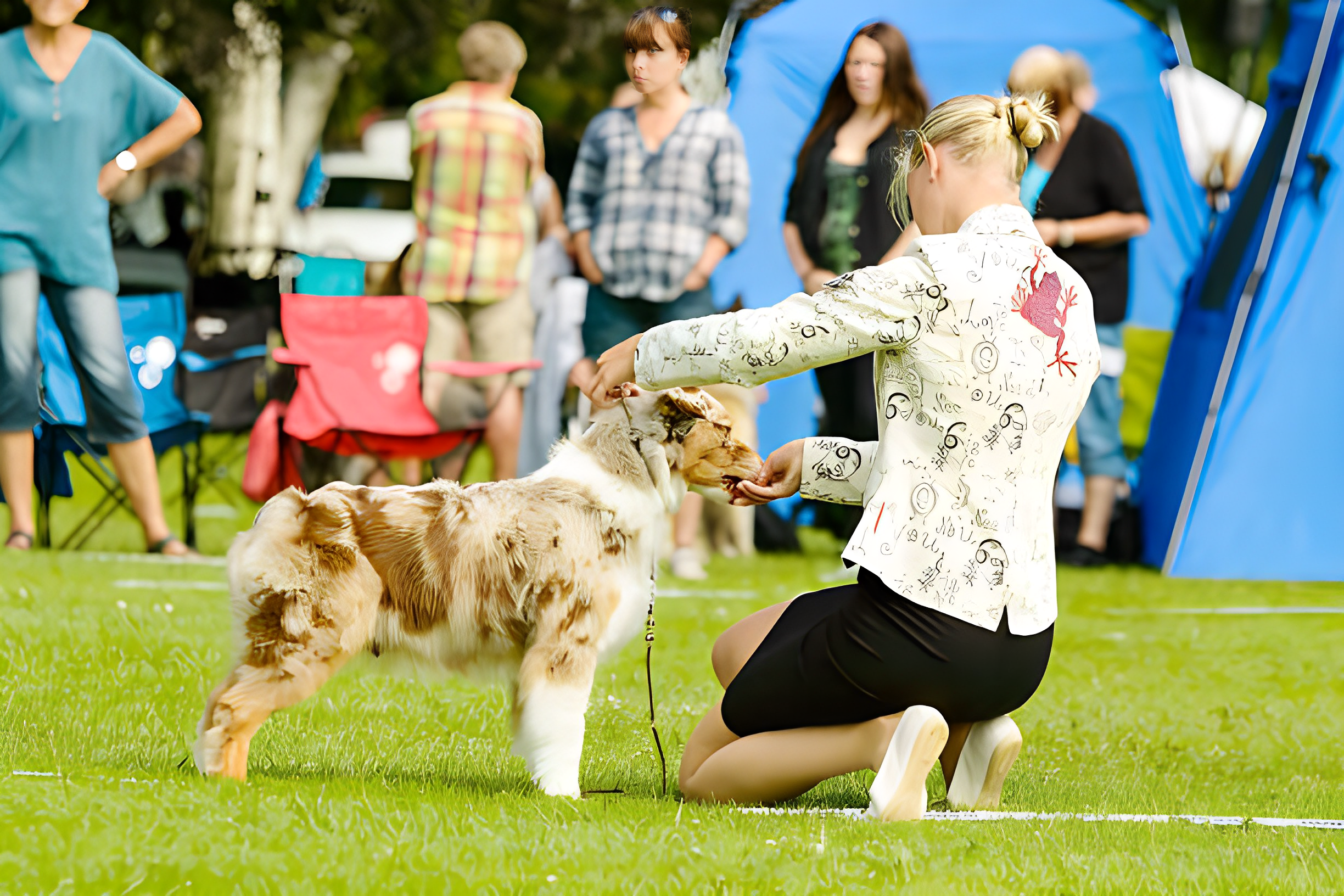So you adopted a new fur baby and can’t get Fido to stop chewing everything in sight. Or maybe you rescued an older dog who growls at strangers passing by on walks. Dog ownership comes with great joy as well as great responsibility – those adorable puppy eyes depend on you for care, love and guidance. Investing time and money into professional training creates opportunities for you to truly bond with your four-legged friend while establishing healthy habits. With the right local program catered to your dog’s unique needs, you’ll both master the basics like potty training and leash walking. And more advanced obedience helps ensure years of tail wags and wet kisses ahead. Let’s dig into the different types of classes available near you and how to choose the best fit. (dog training near me)
The Benefits of Dog Training
Dog training provides lifelong benefits for both you and your pup. Investing in professional training classes or private lessons is one of the best things you can do for your dog. Here are a few of the major benefits of dog training:
- Basic obedience. Dog training teaches your dog basic commands like
sit,'stay,’come,'leave it,’ and `heel.’ Mastering these commands will make your dog better behaved and easier to handle in public and at home. - Socialization. Dog training classes provide an opportunity for your dog to socialize with new people and other dogs in a controlled setting. Early positive socialization helps ensure your dog grows into a friendly, well-adjusted companion.
- Fewer behavior problems. Many behavior issues like excessive barking, jumping, pulling on the leash, aggression, separation anxiety, and potty training problems can be addressed through dog training. Stopping or preventing behavior problems will make life with your dog more enjoyable for both of you.
- Stronger bond. Spending one-on-one time training your dog will strengthen the bond between you. Using positive reinforcement training where you reward your dog for good behavior will build trust and bring you closer together.
- Lifelong learning. Dog training should be an ongoing process to keep reinforcing good behavior and learning new skills. Continual training, even if just for a few minutes a day, provides mental stimulation for your dog and an outlet for their energy. Ongoing training will make your dog a well-behaved family member for life.
- Confidence building. Successfully completing a training class gives your dog a sense of achievement and helps build their confidence. A confident, well-trained dog will feel secure in any situation and be able to handle new experiences with less stress and anxiety.
Finding a dog training program that uses positive reinforcement training is key. With the right training approach, you’ll establish a lifelong bond of trust with your dog and gain the skills to handle any situation together. Dog training provides benefits that last far beyond any single class or lesson.
Types of Dog Training Programs
There are several types of dog training programs available to suit your needs. The most common options include:
Private lessons
Working one-on-one with a professional dog trainer is a great way to address specific issues you’re having with your dog. Private lessons allow the trainer to tailor the program to your dog’s needs and learning pace. These personalized sessions tend to be more expensive, but can be extremely effective, especially for severe behavior problems.
Group classes
Group dog training classes are a more affordable option and allow your dog to socialize with other dogs and people. However, the teaching pace may be quicker, and the trainer’s attention is divided among all the dogs. Look for a small class size and a trainer experienced in group dynamics. Group classes are better for general training and basic commands.
Board and train
Board and train, also known as boot camp, involves leaving your dog with the trainer for a period of time, from a few days up to a couple of weeks. The trainer works intensively with your dog during this immersive program. Board and train can be very effective but tends to be one of the most expensive options. It requires a high level of trust in the trainer and facility.
Online or video courses
For those on a budget or in remote areas, online dog training courses let you learn from the comfort of home. You follow video lessons and then practice the techniques with your dog. While convenient and affordable, the trainer is not able to evaluate your dog in person and provide customized feedback. Online courses are best for general training, and you may still need help from a trainer for behavioral issues.
The key is to determine your priorities and budget, and then find a training program that suits your needs. With consistency and practice, professional dog training of any type can positively impact your dog’s behavior and your bond with them.
How to Choose a Dog Trainer Near Me
Choosing a dog trainer is an important decision that will have a significant impact on your dog’s behavior and your relationship with them. When researching dog trainers in your area, here are some key things to consider:
Methods and Techniques
Look for trainers that employ positive reinforcement techniques, like clicker training, treats, play, and praise. Avoid trainers that use harsh physical corrections, choke collars, shock collars or yell at dogs. Ask about their training philosophy and methods to make sure they align with your own beliefs.
Credentials and Experience
While there is no official licensing for dog trainers, many acquire certifications to demonstrate their knowledge and skills. Look for trainers certified by reputable organizations like the Certified Professional Dog Trainer (CPDT), Certified Applied Animal Behaviorist (CAAB) or International Association of Animal Behavior Consultants (IAABC). Also, consider the trainer’s experience, especially with breeds and ages similar to your dog.
Services and Programs
Determine what kind of training you need, such as basic obedience, behavior modification or aggression management. Then look for trainers that offer programs and services that match your needs. Some trainers provide group or private classes, board and train programs, or behavior consultations. Consider your dog’s temperament to decide which option may work best.
References and Reviews
Ask the trainer for references from previous clients, especially those with dogs similar to yours. Check online reviews from sites like Yelp or the trainer’s Google reviews or Facebook page. Look for reviews mentioning things like the trainer’s experience, methods, skills and if the training was helpful.
Cost and Location
Dog training rates can vary significantly based on the trainer’s experience, services offered and where you live. Private or residential training tend to cost more than group classes. Make sure any trainer you consider fits your budget and is located reasonably close to you for classes or consultations.
With some research, you can find an experienced, certified dog trainer that uses positive, reward-based methods and offers services tailored to your needs. Investing in professional training will help ensure a long, happy life with your canine companion.
What to Expect at Dog Training Classes
So you’ve found some dog training programs in your area that look promising. What exactly will these classes entail? What should you expect to learn and experience with your dog? Here’s an overview of what you can typically expect at dog training classes:
The first class is usually an orientation. The trainer will outline the schedule, curriculum, and policies for the course. This is also a chance for you and your dog to get acquainted with the space and meet the other owners and dogs.
Basic obedience commands like ‘sit,’ ‘stay,’ ‘down,’ ‘come,’ and ‘leave it’ are typically focused on. Through positive reinforcement techniques like treats, praise and play, you’ll learn how to teach your dog these essential commands.
Socialization with other dogs and people is an important part of classes. Your dog will learn how to behave calmly around other dogs and strangers in a controlled setting. This helps prevent behavioral issues down the road.
You’ll pick up useful tips for handling common problems like chewing, barking, jumping up, and separation anxiety. The trainer can evaluate your dog’s specific issues and provide tailored advice.
Homework will likely be given to practice what you’ve learned. Short, fun training sessions with your dog a few times a week will help reinforce the lessons. Be patient through the process, as it can take several weeks of consistency for some dogs to master new skills.
Group discussions allow you to ask questions and share experiences with other owners. Hearing from others in a similar situation can be helpful and encouraging.
Some facilities offer additional services like private lessons, agility courses or therapy dog certification. See if any of these interest you to continue your dog’s education after the initial classes end.
With the right approach, dog training classes can be an extremely rewarding experience for both you and your faithful companion. Go in with patience and an open mind—you’ll come out the other end with a well-trained, better-behaved dog, and a stronger bond between you.
Dog Training Near Me: Frequently Asked Questions
So you’ve decided to invest in professional dog training for your four-legged friend. Before you dive in, you likely have some questions about what to expect. Here are some of the most frequently asked questions about dog training programs:
What types of training do they offer?
- Basic obedience: Teaching commands like sit, stay and come. Essential for well-behaved dogs.
- Behavioral: Helping correct issues like excessive barking, aggression, separation anxiety, etc.
- Group vs. private: Group classes are more affordable but private lessons allow for more tailored training. Many places offer both.
How long are the training sessions and how often?
- Most group classes meet for 1 hour, once a week for 4 to 8 weeks. Private lessons usually last 30-60 minutes, 1-2 times a week.
- For the best results, shorter, more frequent sessions are ideal, especially for puppies. This helps prevent information overload and allows time for practice between sessions.
How much does dog training cost?
- Group classes: $50-$200. More affordable but less customized.
- Private lessons: $30-$100 per session. Allows for tailored training to your dog’s needs but more expensive.
- Board and train: $200-$500 per week. Your dog stays at the facility for an intensive multi-day training program. Most expensive option but can be very effective, especially for behavioral issues.
- The most important thing is finding a certified trainer who uses positive reinforcement techniques, treats your dog with kindness and respect, and understands your needs. With the right trainer, your dog will be sitting, staying and coming in no time!
Conclusion
So as you can see, finding the right dog training program for your pooch doesn’t have to be difficult. With a bit of research, you’ll be able to locate quality classes in your area that suit your pup’s unique needs. The skills they gain will be invaluable for years to come, helping them become better behaved and more content. And the bonding experience makes it rewarding for you as well! So don’t hesitate to start your search for dog training near you – your furry BFF will thank you for it.




